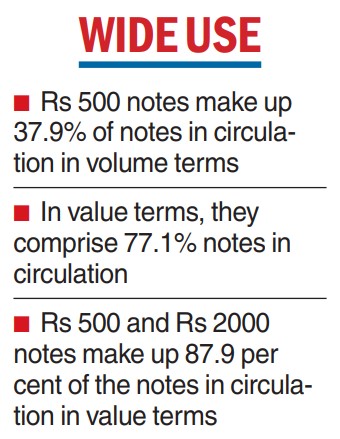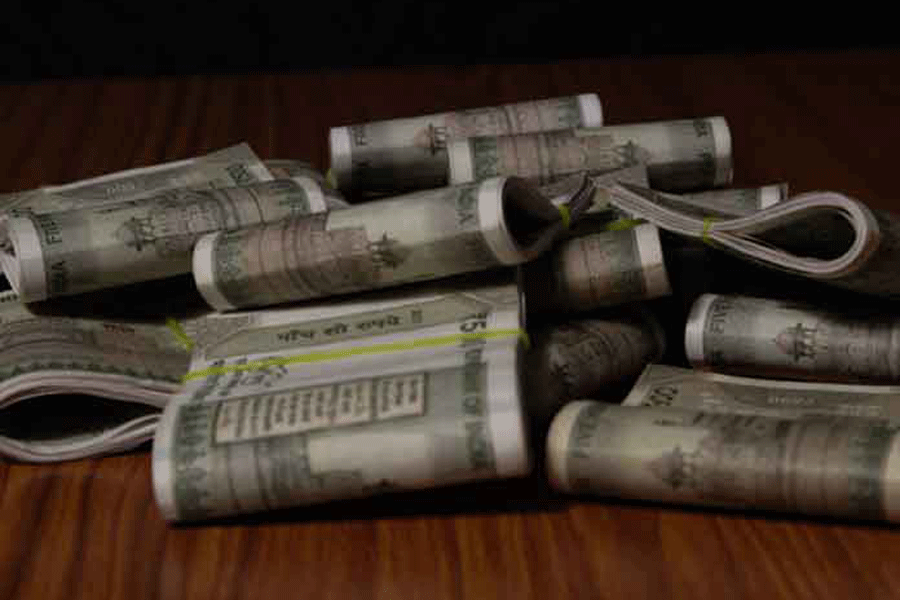Rs 500 notes made up the highest share of notes in circulation, the RBI said.
They account for 77.1 per cent of all notes in circulation by value and 37.9 per cent by volume.
The share of Rs 500 and Rs 2000 notes in value terms made up 87.1 per cent of the notes in circulation.
With the RBI announcing the withdrawal of Rs 2000 notes, the share of Rs 500 notes will rise further this year.
There were 5,16,338 lakh pieces of Rs 500 notes totalling Rs 25,81,690 crore at end-March 2023. The number of Rs 500 notes at end-March 2022 was 4,55,468 lakh.
The report said there were 4,55,468 lakh pieces of Rs 2,000 notes amounting to Rs 3,62,220 crore at end-March.
In volume terms, the Rs 2,000 notes declined to 1.3 per cent of total currency in circulation at end-March 2023 compared with 1.6 per cent in the year-ago period.
In value terms, it declined to 10.8 per cent from 13.8 per cent at end-March 2022.
The value and volume of banknotes in circulation increased 7.8 per cent and 4.4 per cent, respectively, during 2022-23 compared with 9.9 per cent and 5 per cent, respectively, in 2021-22.
The report further said counterfeit notes of Rs 500 increased 14.4 per cent and of Rs 20, 8.4 per cent.
Counterfeits of Rs 10 notes fell 11.6 per cent, Rs 100, 14.7 per cent and Rs 200, 27.9 per cent.
The scope of the Central Bank Digital Currency (CBDC) pilot is being expanded gradually to include more banks and locations.
The first pilot in the Digital Rupee -Wholesale Segment (e rupee-W)commenced on November 1, 2022.
It was followed by the first pilot for retail digital rupee (e rupee-R) was announced on December 1, 2022.
The pilot was launched in Mumbai, New Delhi, Bangalore and Bhubaneswar, comprising participating customers and merchants in a closed user group (CUG).
Other locations, including Ahmedabad, Chandigarh, Gangtok, are being added to the pilot in phases.
The Reserve Bank of India also disposed of 4,824 lakh pieces of soiled Rs 2,000 notes in the last fiscal.












